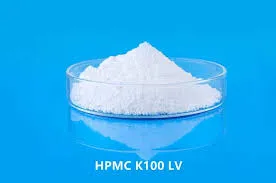
Oct . 05, 2024 06:12 Back to list
what is hydroxypropyl methyl cellulose
What is Hydroxypropyl Methyl Cellulose?
Hydroxypropyl Methyl Cellulose (HPMC), a semi-synthetic polymer derived from cellulose, has gained significant attention in a variety of industries due to its versatile properties and applications. This compound is primarily obtained through the chemical modification of cellulose, which is a natural polymer sourced from plant cell walls. HPMC is soluble in both cold and hot water, forming a clear, viscous solution that makes it valuable in various formulations.
Chemical Structure and Properties
HPMC is produced by the reaction of hydroxypropyl and methyl groups with cellulose. The substitution of hydroxypropyl and methyl groups affects the solubility and thickness of the resulting polymer. The degree of substitution (the extent to which hydroxyl groups are replaced) plays a crucial role in determining the characteristics of HPMC, such as its viscosity, gel strength, and solubility.
The chemical formula of HPMC can be expressed as C25H60O10 for its basic repeating unit. Depending on its specific formulation, HPMC can vary in viscosity, with some grades designed for specific applications like food, pharmaceuticals, and construction materials. The properties of HPMC include good film-forming abilities, stabilization, water retention, and emulsification, which contribute to its extensive use in different fields.
Applications of HPMC
1. Pharmaceutical Industry HPMC is widely used as a thickening agent, stabilizer, and emulsion in drug formulations. It helps in controlling the release rate of drugs, making it ideal for sustained-release and controlled-release formulations. Additionally, HPMC is used as a coating agent for tablets, improving their appearance and facilitating smoother swallowing.
2. Food Industry In food products, HPMC serves as a thickener, emulsifier, and gelling agent. It enhances the texture and stability of various food items, including sauces, dressings, and dairy products. Being non-toxic and approved by food safety authorities, HPMC is considered safe for consumption.
what is hydroxypropyl methyl cellulose

3. Construction Materials HPMC is a key ingredient in construction materials such as cement, mortar, and tile adhesives. It provides improved workability, adhesion, and water retention, allowing for better performance of the materials during application. Its water-retaining properties help maintain moisture levels, promoting better curing of cement and preventing cracks.
4. Cosmetic and Personal Care Products In the cosmetics industry, HPMC acts as a thickener and stabilizer in lotions, creams, and gels. Its ability to retain moisture and form a protective barrier on the skin makes it a popular choice for personal care formulations.
5. Agricultural Applications HPMC is also finding its way into agriculture, where it is used as a film-forming agent in seed coatings and controlled-release fertilizers. This helps to improve the efficiency of nutrient delivery and moisture retention in soil.
Safety and Environmental Considerations
Hydroxypropyl Methyl Cellulose is generally recognized as safe (GRAS) for use in food and pharmaceutical applications. It is non-toxic, hypoallergenic, and biodegradable, making it a sustainable choice compared to many synthetic polymers. Safety assessments by regulatory authorities, such as the FDA and EFSA, have confirmed its safety for various uses.
Despite its safety profile, it is essential to use HPMC within the recommended limits for specific applications to avoid any potential adverse effects. Researchers continue to explore the benefits of HPMC in various sectors while ensuring compliance with safety and environmental regulations.
Conclusion
Hydroxypropyl Methyl Cellulose stands out due to its multifunctional properties and broad range of applications across different industries. Its role in pharmaceuticals, food, cosmetics, construction, and agriculture highlights the material's versatility and importance. As research continues and innovations in formulation processes are explored, HPMC is likely to become an even more integral component in developing cutting-edge products that require efficient, safe, and effective additives.
-
Versatile Hpmc Uses in Different Industries
NewsJun.19,2025
-
Redispersible Powder's Role in Enhancing Durability of Construction Products
NewsJun.19,2025
-
Hydroxyethyl Cellulose Applications Driving Green Industrial Processes
NewsJun.19,2025
-
Exploring Different Redispersible Polymer Powder
NewsJun.19,2025
-
Choosing the Right Mortar Bonding Agent
NewsJun.19,2025
-
Applications and Significance of China Hpmc in Modern Industries
NewsJun.19,2025







